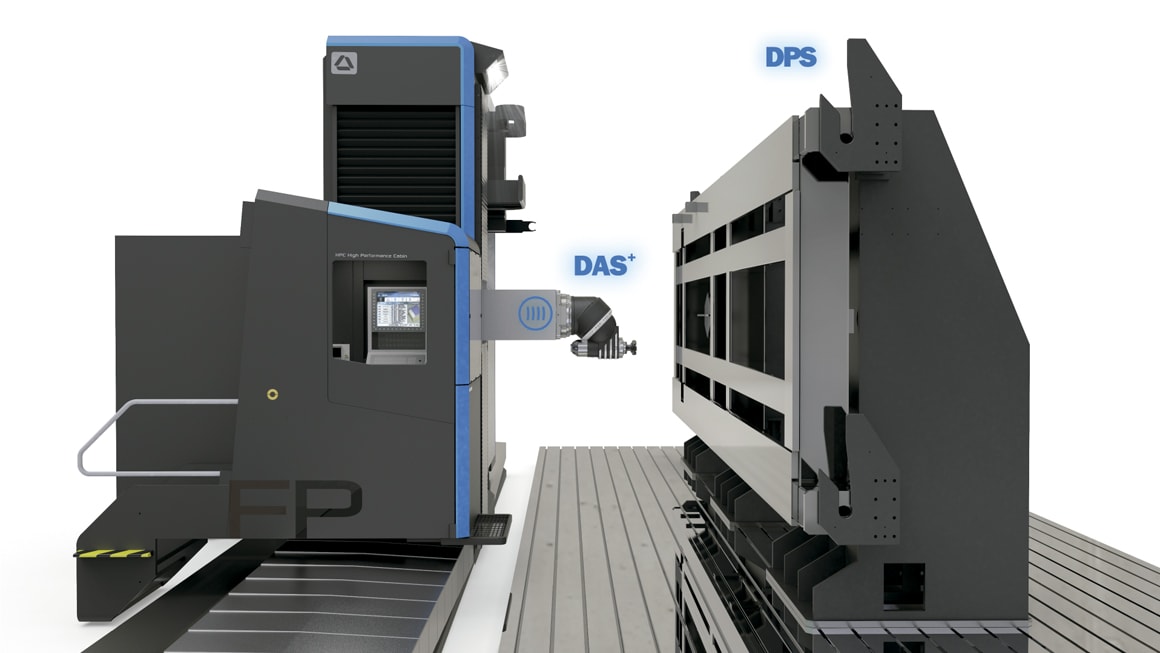Experts in dynamics
SORALUCE is able to reduce chatter choosing the appropriate system or strategy for each particular case.
Chatter continues to be nowadays one of the most harmful and difficult problems to avoid in any kind of machining process. The global competition is pushing the manufacturing companies to improve the productivity of their processes and, therefore, the development of efficient chatter avoidance tools and methods has become of paramount importance for the manufacturing industry.
Many times, when a vibration problem arises, it is difficult for the machinist to assess where the problem comes from. To get out of the situation, sometimes the cutting conditions are decreased, sometimes the tool type is changed or some screws in the machine or the clamping fixture are further tightened. These measures are often based on a trial and error procedure, thus, a valuable time is lost in the process and a compromise solution far from the best machining performance is finally reached in the most optimistic case.
Keeping this in mind, it is very important to identify the specific source of the vibration problem in order to apply a proper response. For instance, it will be useless to change the tool or increase the dynamic stiffness of the machine by retracting the ram if the problem is caused by a not sufficiently stiff workholding system.
In general, in a properly assembled and tuned machining system, the vibration source can be found due to the lack of dynamic stiffness of one or more of its components. As a general rule, the sources of vibrations can be one or more of the following machining components (see Figure 1):
- Tool
- Workpiece
- Workpiece fixture
- Machine
Depending on the source of vibration, the optimum solution may present a different approach. The mass, the frequency and the dynamic characteristics of the vibration must be considered in order to seek the optimum solution. SORALUCE, in collaboration with its research center, has the capability to assess the origin of chatter and has developed multiple solutions in order to avoid detrimental vibrations in machining process and thus increase the productivity.
After the successful development of the DAS system, devoted to maximize the cutting capability of the machine with long ram overhangs (where the dynamic stiffness of the machine is weaker), SORALUCE now presents the DPS system, which focuses on suppressing chatter coming from the workpiece fixturing system.
Workholding equipment is usually designed to fulfil the geometrical and force distribution requirements, whereas its dynamic flexibility is not usually considered. In roughing operations of large workpieces, however, process instability often occurs due to the dynamic flexibility of the workholding system. For this reason, the adequate dynamic performance of the workholding is crucial for an optimum machining performance.
The DPS system is based on a tuned mass damper (TMD), which essentially consists of an added mass-spring system (see Figure 3a) that, combined with the dynamics of the critical mode of the fixturing system, increases the overall dynamic stiffness to a great extent (see Figure 3b).
Large machined parts usually require a complex custom fixturing system designed especially for very small production batches. This requirement is usually covered by modular workholding systems based on standard elements that can be combined to hold parts of different shapes and sizes. This results in constantly changing dynamic characteristics and therefore, different critical frequencies arise depending on the workholding configuration. For this reason a frequency tuning capability of the tuned mass damper is essential in order to adapt to different configurations. The DPS can effectively improve the dynamic stiffness of modular fixtures by changing its dynamic characteristics.
The DPS mechanical system consists of a moving mass which can oscillate in a direction which is aligned with the main structure oscillation direction. This internal mass is connected to a orientable spring, so that the resulting stiffness of the mass suspension can be varied into a certain bandwidth. This simple working principle will allow a variation of the dynamic behavior of the system. When the main oscillation frequency of the internal mass is matched with the chatter frequency, the vibration amplitude of the structure where the DPS is standing will suffers a dramatic reduction creating the damping effect.
The DPS system will tune autonomously over its actuation frequency range as a function of the different workholding setups. Moreover, the system is wireless, so it just needs to be clamped in the proper place and it will be ready to work. An integrated accelerometer measures the existing vibration and sends it to an internal controller, which in turns sends the right command to the tuning motor according to its working algorithm. The DPS communicates via wireless with the machine, in order to monitor its state and the existing vibration at all times. The electricity is provided through integrated batteries.
Although the variable stiffness characteristic allows covering a wide actuation frequency range, the tuning mass is another important factor that will determine the effectiveness of the DPS for different configurations. Even tough an optimum tuning is achieved for a specific workholding configuration, if the mass of the DPS is not enough, the improvement achieved might be strongly limited. As the available space on such kind of workholding systems is often limited, it is important to perform a study which leads to the selection of the proper DPS size. It is also important to analyze the proper location and acting direction of the DPS system. With the right preliminary technical study, SORALUCE is able to develop customized solutions choosing the appropriate system or strategy for each particular case.
In conclusion, the new DPS system will help to enhance dynamic characteristics of fixtures for large workpieces is order to assure chatter free machining of heavy-duty milling operations, allowing a maximum power rate use and thus maximizing productivity.
